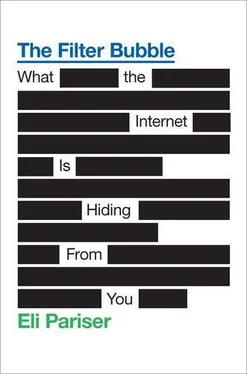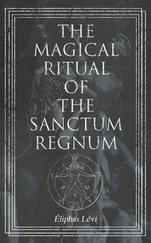But perhaps the biggest problem is that the personalized Web encourages us to spend less time in discovery mode in the first place.
In Where Good Ideas Come From , science author Steven Johnson offers a “natural history of innovation,” in which he inventories and elegantly illustrates how creativity arises. Creative environments often rely on “liquid networks” where different ideas can collide in different configurations. They arrive through serendipity—we set out looking for the answer to one problem and find another—and as a result, ideas emerge frequently in places where random collision is more likely to occur. “Innovative environments,” he writes, “are better at helping their inhabitants explore the adjacent possible”—the bisociated area in which existing ideas combine to produce new ones—“because they expose a wide and diverse sample of spare parts—mechanical or conceptual—and they encourage novel ways of recombining those parts.”
His book is filled with examples of these environments, from primordial soup to coral reefs and high-tech offices, but Johnson continually returns to two: the city and the Web.
“For complicated historical reasons,” he writes, “they are both environments that are powerfully suited for the creation, diffusion, and adoption of good ideas.”
There’s no question that Johnson was right: The old, unpersonalized web offered an environment of unparalleled richness and diversity. “Visit the ‘serendipity’ article in Wikipedia,” he writes, and “you are one click away from entries on LSD, Teflon, Parkinson’s disease, Sri Lanka, Isaac Newton, and about two hundred other topics of comparable diversity.”
But the filter bubble has dramatically changed the informational physics that determines which ideas we come in contact with. And the new, personalized Web may no longer be as well suited for creative discovery as it once was.
In the early days of the World Wide Web, when Yahoo was its king, the online terrain felt like an unmapped continent, and its users considered themselves discoverers and explorers. Yahoo was the village tavern where sailors would gather to swap tales about what strange beasts and distant lands they found out at sea. “The shift from exploration and discovery to the intent-based search of today was inconceivable,” an early Yahoo editor told search journalist John Battelle. “Now, we go online expecting everything we want to find will be there. That’s a major shift.”
This shift from a discovery-oriented Web to a search and retrieval–focused Web mirrors one other piece of the research surrounding creativity. Creativity experts mostly agree that it’s a process with at least two key parts: Producing novelty requires a lot of divergent, generative thinking—the reshuffling and recombining that Koestler describes. Then there’s a winnowing process—convergent thinking—as we survey the options for one that’ll fit the situation. The serendipitous Web attributes that Johnson praises—the way one can hop from article to article on Wikipedia—are friendly to the divergent part of that process.
But the rise of the filter bubble means that increasingly the convergent, synthetic part of the process is built in. Battelle calls Google a “database of intentions,” each query representing something that someone wants to do or know or buy. Google’s core mission, in many ways, is to transform those intentions into actions. But the better it gets at that, the worse it’ll be at providing serendipity, which, after all, is the process of stumbling across the un intended. Google is great at helping us find what we know we want, but not at finding what we don’t know we want.
To some degree, the sheer volume of information available mitigates this effect. There’s far more online content to choose from than there was in even the largest libraries. For an enterprising informational explorer, there’s endless terrain to cover. But one of the prices of personalization is that we become a bit more passive in the process. The better it works, the less exploring we have to do.
David Gelernter, a Yale professor and early supercomputing visionary, believes that computers will only serve us well when they can incorporate dream logic. “One of the hardest, most fascinating problems of this cyber-century is how to add ‘drift’ to the net,” he writes, “so that your view sometimes wanders (as your mind wanders when you’re tired) into places you hadn’t planned to go. Touching the machine brings the original topic back. We need help overcoming rationality sometimes, and allowing our thoughts to wander and metamorphose as they do in sleep.” To be truly helpful, algorithms may need to work more like the fuzzyminded, nonlinear humans they’re supposed to serve.
In 1510, the Spanish writer Garci Rodriguez de Montalvo published a swashbuckling Odyssey -like novel, The Exploits of Esplandian, which included a description of a vast island called California:
On the right hand from the Indies exists an island called California very close to a side of the Earthly Paradise; and it was populated by black women, without any man existing there, because they lived in the way of the Amazons. They had beautiful and robust bodies, and were brave and very strong. Their island was the strongest of the World, with its cliffs and rocky shores. Their weapons were golden and so were the harnesses of the wild beasts that they were accustomed to domesticate and ride, because there was no other metal in the island than gold.
Rumors of gold propelled the legend of the island of California across Europe, prompting adventurers throughout the continent to set off in search of it. Hernán Cortés, the Spanish conquistador who led the colonization of the Americas, requested money from Spain’s king to lead a worldwide hunt. And when he landed in what we now know as Baja California in 1536, he was certain he’d found the place. It wasn’t until one of his navigators, Francisco de Ulloa, traveled up the Gulf of California to the mouth of the Colorado river that it became clear to Cortez that, gold or no, he hadn’t found the mythical island.
Despite this discovery, however, the idea that California was an island persisted for several more centuries. Other explorers discovered Puget Sound, near Vancouver, and were certain that it must connect to Baja. Dutch maps from the 1600s routinely show a distended long fragment off the coast of America stretching half the length of the continent. It took Jesuit missionaries literally marching inland and never reaching the other side to fully repudiate the myth.
It may have persisted for one simple reason: There was no sign on the maps for “don’t know,” and so the distinction between geographic guesswork and sights that had been witnessed firsthand became blurred. One of history’s major cartographic errors, the island of California reminds us that it’s not what we don’t know that hurts us as much as what we don’t know we don’t know—what ex–secretary of defense Donald Rumsfeld famously called the unknown unknowns.
This is one other way that personalized filters can interfere with our ability to properly understand the world: They alter our sense of the map. More unsettling, they often remove its blank spots, transforming known unknowns into unknown ones.
Traditional, unpersonalized media often offer the promise of representativeness. A newspaper editor isn’t doing his or her job properly unless to some degree the paper is representative of the news of the day. This is one of the ways one can convert an unknown unknown into a known unknown. If you leaf through the paper, dipping into some articles and skipping over most of them, you at least know there are stories , perhaps whole sections, that you passed over . Even if you don’t read the article, you notice the headline about a flood in Pakistan—or maybe you’re just reminded that, yes, there is a Pakistan.
Читать дальше











